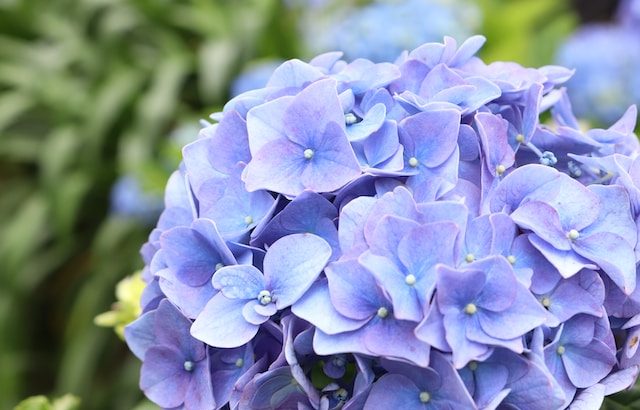Among the many floral delights that accentuate homes in The Hamptons, hydrangeas have emerged as a favorite. With their lush clusters of flowers in hues ranging from pinks, blues, and purples to crisp whites, hydrangeas can dramatically transform a garden’s landscape.
But what if you’re more familiar with New York City’s high-rises than hydrangeas? No worries! Even if gardening isn’t your forte, you can follow these easy steps to ensure your Hamptons hydrangeas bloom longer and remain the envy of your neighbors.
1. Start with Soil:
- Test Before You Invest: The pH of your soil can affect the color of your hydrangeas. Lightly acidic soil (pH 5-6) typically gives blue flowers, while alkaline soil (pH 6-7) yields pink blooms.
- Amend Accordingly: Add garden lime to raise pH (for pinker flowers) or aluminum sulfate to lower pH (for bluer flowers).
2. Pick the Perfect Spot:
- Hydrangeas love morning sun and afternoon shade. Find a spot in your garden where they can soak in the early rays but are protected from the harsh afternoon sun.
3. Water Wisely:
- Deeply but Infrequently: Instead of frequent shallow watering, hydrate your hydrangeas deeply once or twice a week. This encourages the roots to grow deeper and stronger.
- Avoid Overhead Watering: Water at the base to prevent leaf diseases and fungal issues.
4. Fertilize Thoughtfully:
- Once a Year: In late winter or early spring, apply a slow-release, balanced fertilizer.
- Skip the Nitrogen: Too much nitrogen can lead to lush green growth but fewer blooms. Choose a fertilizer with a balanced N-P-K ratio or one with a little less nitrogen.
5. Prune Properly:
- Know your hydrangea variety. Some bloom on old wood and some on new.
- For those blooming on old wood (like Oakleaf and Bigleaf), prune just after they finish blooming. For those on new wood (like Panicle and Smooth), early spring is ideal.
6. Protect from Pests:
- Watch out for common pests like aphids and spider mites. Use an insecticidal soap or neem oil to keep them at bay.
- Keep a lookout for brown or yellow leaves, which might indicate a problem.
7. Bonus Tip: Mulching Magic:
- Mulch your hydrangeas with organic compost or pine bark to maintain soil moisture, regulate temperature, and suppress weed growth.
With a little attention to detail, regular maintenance, and love your hydrangeas can not only bloom but thrive. The result? A Hampton garden that’s a delightful oasis of color and charm. Happy gardening!
